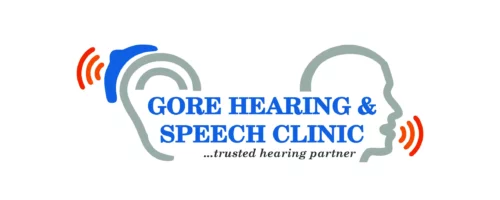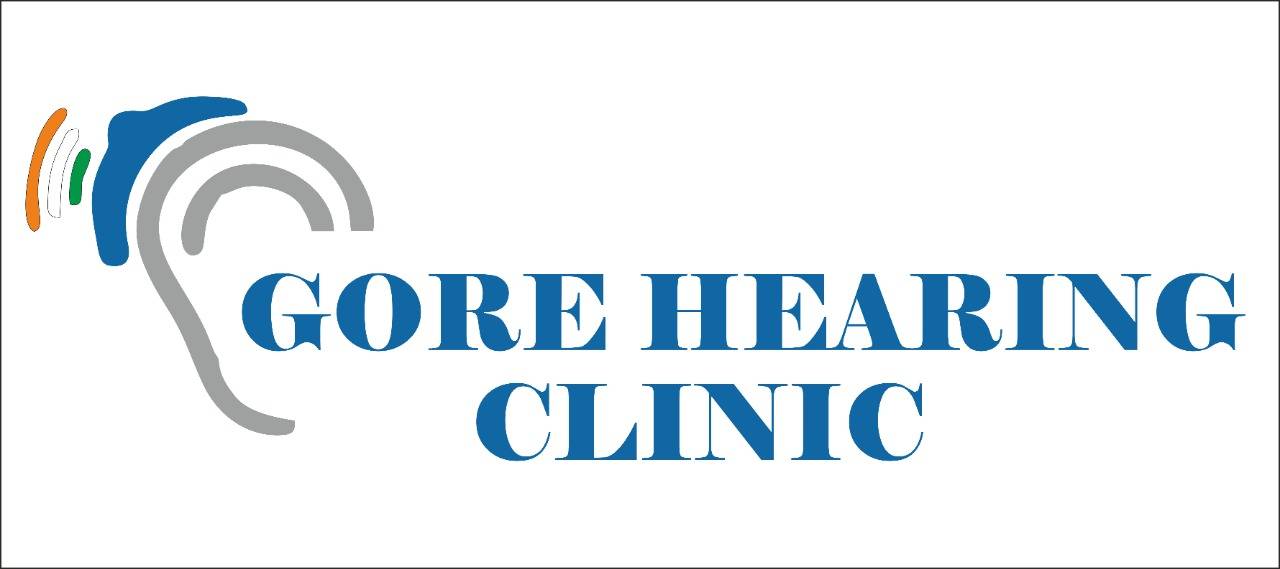Conventional hearing aids work to treat hearing loss by boosting the incoming signal and transmitting the boosted sound via the cochlea via air conduction. Baha Bone Anchored Hearing Aids, on the other hand, through direct bone conduction, BAHA offer an excellent option for people with conductive, mixed, or single-sided sensorineural deafness. Contrarily, cochlear implants are appropriate for people who have bilateral severe to profound hearing loss and whose cochlear hair cells have been so severely damaged that they cannot be helped by hearing aids.
A functioning cochlea is necessary for a BAHA.
So now the question arises: What exactly is BAHA Bone Anchored Hearing Aids?

Bone-anchored hearing systems are surgically implanted devices, unlike hearing aids. In contrast to conventional hearing aids, which enhance acoustic signals that enter the ear canal, they treat hearing loss by bone conduction of sound vibrations to the inner ear.
Bone-anchored systems are therefore regarded as specialized devices for those who have issues with their outer or middle ear but at least one cochlea that is working.
Contrary to popular belief, cochlear implants are not the same as bone-anchored hearing systems, commonly known as bone-anchored auditory implants or BAHA bone-anchored hearing aids. They also fall within the category of surgically implanted hearing aids, however, the patient indications differ. In other words, they address various hearing issues.
How do BAHA Bone Anchored Hearing Aids implants function?
A titanium bone implant and an external sound processor make up bone-anchored hearing aids.
The surgically placed implant receives sound signals from the external microphone and sound processor and converts them into vibrations. The implant then vibrates the surrounding bone, creating sound waves that travel up the auditory nerve, stimulate hair cells in the cochlea, and enter the inner ear.
BAHA implants may be beneficial because issues with the middle ear and ear canal may hinder sound waves and impulses from getting to the inner ear. As a result, conventional hearing aids are useless.
Why are bone-anchored hearing devices used?
It is desirable for users of bone-anchored hearing aids to have at least one cochlea (inner ear) that is functioning correctly. They may just have partial hearing loss in one ear or conductive hearing loss, which occurs when the outer or middle ears do not transmit sound properly. The ideal person to determine candidature is a hearing care specialist such as an otolaryngologist (ENT).
By directly transmitting sound vibrations to the inner ear through the skull bone, these technologies avoid certain issues. This is advantageous because issues with the middle ear and ear canal may hinder sound waves and impulses from getting to the inner ear. Standard hearing aids are useless in those situations.
People with severe outer or middle ear abnormalities and those who have single-sided deafness, commonly known as unilateral hearing loss, are among those who often benefit the most from bone-anchored hearing systems. In severe situations of recurring ear infections or sensitivities to conventional hearing aids, this kind of hearing aid may also be suggested.
What benefits do bone-anchored hearing aids offer?
The benefits of Bone Anchored Hearing Aids such as Baha are well documented. By bypassing the outer or middle ear, Baha can increase hearing in noisy situations and help localize sounds. The benefit is not only improved speech understanding but also hearing with Baha results in a natural sound with less distortion and feedback when compared with the conventional hearing aid.
The ear canal is left open for comfort and to help prevent any issues with conventional hearing aids due to allergies or recurrent ear infections. In patients with Single-sided sensorineural deafness (SSD), Baha sends the sound via the skull bone from the deaf side to the inner ear of the hearing side. This transfer of sound gives a 360-degree sound awareness.
Purchasing a bone-anchored hearing aid has various advantages over a more traditional bone conduction hearing aid or insertable hearing aid device and a few are given below :
- There is no pressure on the skin or the skull. Because the titanium implant fuses with the bone, the wearer is unable to feel it and hence does not experience any pressure on the skull.
- In comparison to conventional hearing aids, BAHA has superior sound quality, uses less energy, and provides greater comfort because there is no intervening soft and the skin doesn’t muffle the signal, is more covert, and is cozier.
- Bone-anchored hearing aids are very discrete, which is advantageous for people who don’t want to make their hearing loss obvious as it utilizes the same cutting-edge technology as high-end hearing equipment.
- Preoperative testing is possible, which improves outcome prediction.
- An easy procedure with few dangers. The implantation procedure for bone-anchored hearing aids is simple and non-invasive.
- Local anesthesia is used during surgery.
Indication for Baha
1. Chronic ear infection
This is a fairly common disorder that is frequently accompanied by ongoing or intermittent ear canal leakage. These patients typically also suffer from hearing loss and frequently require amplification. Due to the drainage, a traditional air conduction aid with a mould placed in the ear canal opening is frequently impossible to wear and may even cause drainage. The malfunction of the eardrum and middle ear bones may make it difficult for an air conduction aid to compensate for considerable hearing loss.
A bone conduction hearing aid that avoids the middle ear and stimulates the inner ear directly via the skull is the treatment for these people. The bone does a very good job of transmitting sound with minimal distortion and attenuation. In actuality, the hair cells in the inner ear cannot distinguish whether the sound is originating from the usual external ear canal and middle ear or from bone vibrations.
2. Only one side of Deafness
Regardless of the cause, a person who is deaf on one side frequently experiences hearing problems even if the other ear is normal. This is particularly true under challenging circumstances like listening in noisy settings and when multiple persons are speaking at once. Lifting the head shadow to the deaf side with the aid of a Baha might be beneficial. Another challenging hearing condition is hearing loss in the lone hearing ear.
Hearing loss as a result of the surgical operation is always a possibility with traditional ear surgery. As a result, the majority of ear surgeons are hesitant to operate on the hearing ear alone. The Baha procedure often works well and carries no such danger. According to a study, longer trials of the BAHA system with a headband before surgery resulted in patients having more reasonable expectations. Only 50% of the 50 individuals in the research wanted to have surgery.
3. Issues with the outer ear canal
It is impossible or extremely painful to utilize a typical air conduction aid when the external ear canal is inflamed or schematized. One excellent option might be direct bone conduction.
4. Malformations
Malformed patients are not always good candidates for reconstructive surgery. Patients with Treacher-Collins disease may have severe ossicular deformities, facial nerve abnormalities, and other major anomalies. During surgery, these structures as well as the inner ear may be in danger.
Patients with Down syndrome frequently have an ear canal that is too small in addition to middle ear malformations that impede hearing. It has been hypothesized that these patients’ hearing impairments have a role in some of the mental retardation they exhibit.
Baha care after surgery
1. Cleaning the area surrounding the abutment on a daily basis is indicated for the patient; washing hair may soften any crust. The patient is also instructed to carefully wipe the bristles of the soft cleaning brush included in the BAHA kit on the side of the abutment rather than the patient’s skin. The use of antibacterial soap is advised, along with the removal of all debris from the area surrounding and inside the abutment. The skin should then be gently dried.
2. The patient must prevent hair from wrapping around the abutment.
3. The patient should refrain from repeatedly blowing hot air from a hairdryer on the abutment.
4. It is advisable to cover the abutment and skin graft site with plastic to protect the skin and the abutment from chemicals. This is especially important whenever strong chemicals, such as hair dyes, are applied to your hair because they can cause the skin around the abutment to turn red, swell, infect, or burn.
5. Prior to having an MRI, the external BAHA processor should be taken out.
6. It should be worn continuously throughout the day for maximum benefit.
7. You can stop the processor from whistling by simply moving it if it whistles when it is touched or in contact with other objects.
8. The processor needs to be rotated 90 degrees on the abutment or until the wind sound stops when using directional microphones outdoors in windy situations.
Conclusion
The BAHA is ideal for those with issues with their outer and middle ears, as well as for those with unilateral deafness who cannot wear traditional hearing aids. It is also far more comfortable to wear than any other sort of hearing aid solution, and once it has been properly implanted, neither the patient nor anybody else would know that it is being worn. Unlike traditional hearing aids, it does not come off or get loose and, if correctly implanted, do not need to be adjusted.
Also due to its positive hearing results, relative simplicity, and low risk of problems, BAHA was shown to be an excellent therapeutic choice for individuals with bilateral conductive deafness, as the literature has already demonstrated. Its application for conductive deafness and unilateral sensorineural loss has been the subject of recent studies.

